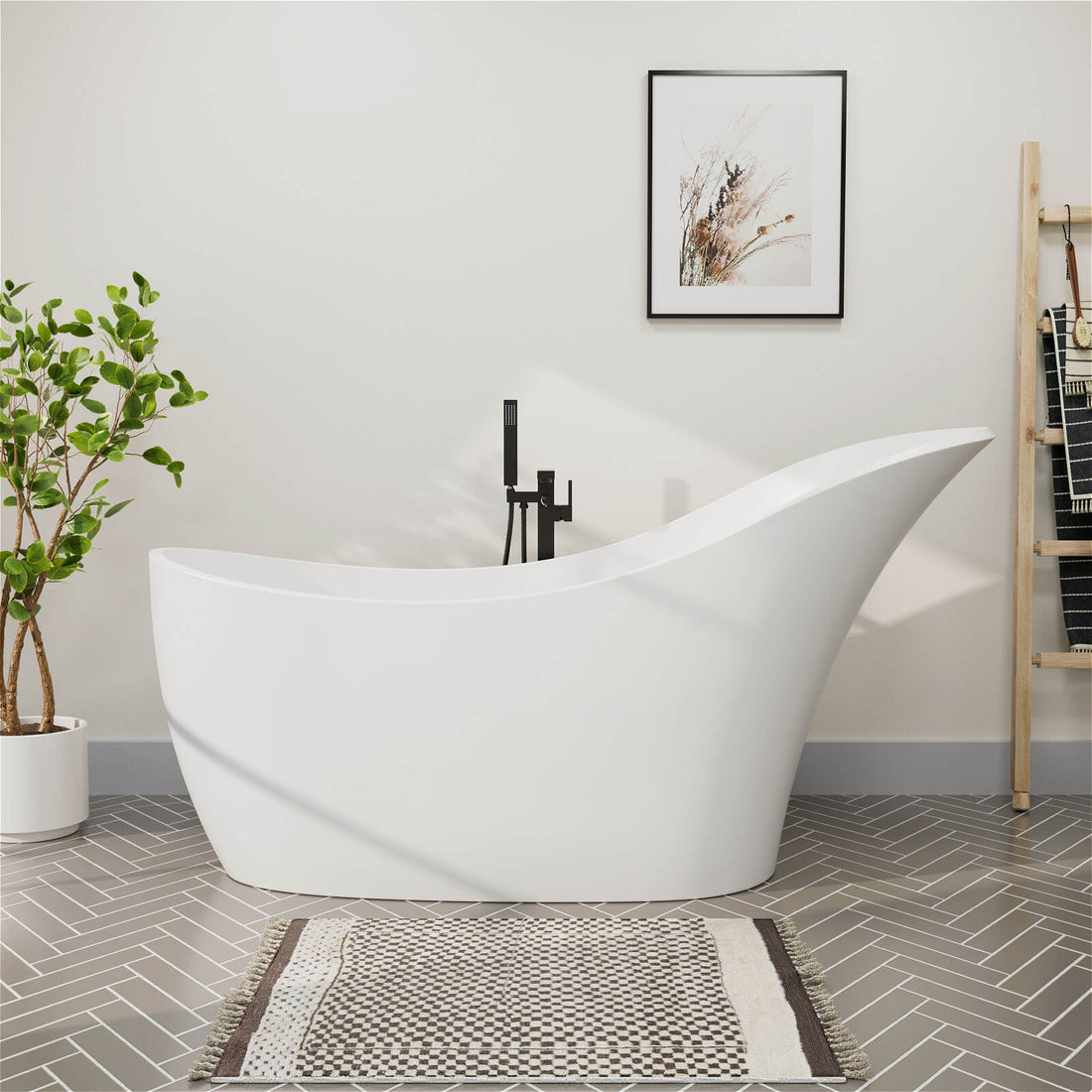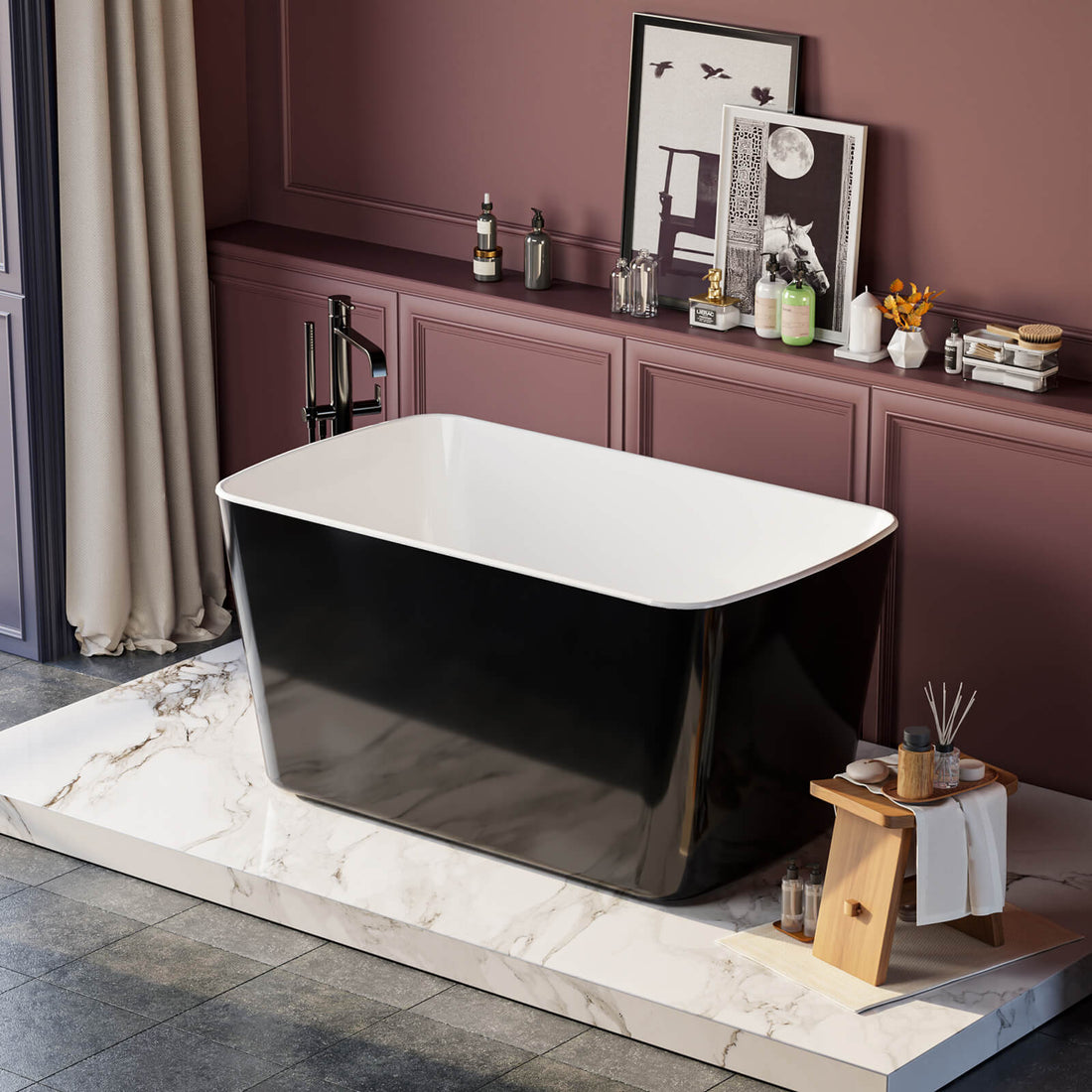Most users purchasing bathtubs seek to enhance their soaking experience, which depends on various factors, one of which is the reclining angle. An appropriate reclining angle ensures users remain relaxed and enjoy their soak. Due to differing user preferences, bathtubs with various reclining angle designs are available, typically ranging from 90° to 130°. So, which angle suits you best?
What is the Best Bathtub Inclination Angle
When considering the appropriate bathtub inclination angle to suit individual needs, it's important to understand that there is no one-size-fits-all solution. Everyone has different habits and bodily characteristics, which is why there are various angle designs available in the market. Therefore, when selecting the optimal angle, comfort should always be the starting point. You can test different inclination angles to find the one that best suits you.


It's most important to consider any potential health or physical conditions. The inclination angle of the bathtub directly affects the lumbar spine, which consists of five naturally inward-curving vertebrae located in the lower back. For users with back issues, the best choice is an ergonomic bathtub with built-in lumbar support features designed to promote the natural curvature of the spine while sitting.

Additionally, taking into account the user's body shape and size is crucial. Taller and larger individuals might require a greater incline angle to avoid feeling cramped in the bathtub, while shorter and smaller users might find a gentler incline angle more relaxing. For those who prefer long soaking sessions, a sit-in bathtub is recommended.
Finally, if you have any further questions, feel free to contact Giving Tree Home customer service. Simply provide your requirements and body information, and we'll recommend the most suitable products for you!
-
63"/67"/71'' Solid Surface Stone Resin Freestanding Soaking Bathtub Comfortable Backrest Design

 63"/67"/71'' Solid Surface Stone Resin Freestanding Soaking Bathtub Comfortable Backrest Design
63"/67"/71'' Solid Surface Stone Resin Freestanding Soaking Bathtub Comfortable Backrest Design- Regular price
-
From
$1,799.99 - Regular price
-
$2,999.99 - Sale price
-
From
$1,799.99
Quick view
-
66" Stone Resin Single Slipper Bathtub Freestanding Soaking Tub with Backrest

 66" Stone Resin Single Slipper Bathtub Freestanding Soaking Tub with Backrest
66" Stone Resin Single Slipper Bathtub Freestanding Soaking Tub with Backrest- Regular price
-
$1,699.99 - Regular price
-
$2,799.99 - Sale price
-
$1,699.99
Quick view
-
66" Insulated Double Slipper Freestanding Bathtub

 66" Insulated Double Slipper Freestanding Bathtub
66" Insulated Double Slipper Freestanding Bathtub- Regular price
-
$1,559.99 - Regular price
-
- Sale price
-
$1,559.99
Quick view
-
49" Small Size Sit-In Soaking Tub

 49" Small Size Sit-In Soaking Tub
49" Small Size Sit-In Soaking Tub- Regular price
-
$884.00 - Regular price
-
- Sale price
-
$884.00
Quick view
Bathtub Inclination Angle Measurement
When it comes to determining the ideal inclination angle for your bathtub, relying solely on visual estimation can often lead to inaccuracies due to the subtle differences in angles. Therefore, it's essential to know how to measure accurately. Fortunately, this process is straightforward and requires only basic tools that you likely already have on hand.
-
Needed
- Protractor
- Tape measure
- Water level
-
Begin
It's crucial to understand what exactly we're measuring in a bathtub. The inclination angle refers to the slope on which the user's back rests. In some bathtubs, the internal angle may differ from the external angle, so it's important to account for this discrepancy to obtain accurate measurements.
-
Instructions
Locate the Points of Measurement: Identify two points where the backrest of the tub meets the base and where it meets the rim at the top.
Position the Level: Place the level on a flat surface within the tub to establish a horizontal reference line, ensuring the tub is level.
Measure the Angle: Using the reference line, measure the slope angle of the tub and record it as the external angle.
Calculate the Interior Angle: Remember, we're interested in the internal angle. To determine this, subtract the external angle from 180 degrees.
-
PS
It's important to note that in a bathtub filled with water, the body will experience some buoyancy, altering the feel of the inclination angle compared to when the bathtub is dry.
When evaluating the comfort of your tub's inclination, take this buoyancy effect into account and aim for an angle that compensates for it without compromising comfort.
You may opt for a slightly steeper angle than what feels comfortable in a dry tub to accommodate the buoyancy of your body in the water.
How to Adjust Bathtub Inclination Angle

Modern bathtubs are not just designed for comfort; they also serve as a canvas for innovative design concepts that meet all comfort requirements without feeling like military-grade tanks. At Giving Tree Home, we prioritize ergonomic design, ensuring that our bathtub products support your body in a naturally comfortable posture, thus reducing pressure on the neck and shoulders.
However, if you've purchased a poorly designed bathtub from elsewhere and experience discomfort due to the inclination angle, adjustments may be necessary!
Our best advice is to invest in bathtub accessories such as backrests or pillows, which can be adjusted by 15° to 30° to suit your preferred level of comfort. Opt for backrests made of materials like wood, as they prevent slipping, especially when using bath oils or soaps.
Ending
Carefully considered bathtub inclination angles can make the tub both attractive and practical, whereas neglecting this aspect may result in a clunky and unappealing appearance. Therefore, at Giving Tree Home, we place great emphasis on ensuring that our bathtubs are both inviting and stylish, striking a balance between aesthetics and functionality. This design philosophy has positioned us as leaders in the bathroom furniture industry, prioritizing harmony between form and function.
More Ideas
-

6 Creative Black Bathroom Design Ideas
Black has become a popular choice in modern bathroom design, adding sophistication, luxury, and drama. Whether as an accent or primary color, it transforms spaces with sleek tiles, bold vanities,...
-

How to Use a Toilet Seat Cover
Toilet seats are breeding grounds for bacteria. To maintain hygiene and avoid direct contact with dirt in public restrooms, using a toilet seat cover is the best solution. It's simple,...
-

6 Design Tips to Hide the Toilet in Your Bathroom
Especially in today's pursuit of minimalism and high-end design, finding ways to cleverly "hide" the toilet and create a more harmonious and luxurious bathroom space has become a common goal...
-

Bidet vs. Smart Toilet
The market now offers two primary solutions for superior toilet hygiene — thorough cleansing with warm water: the traditional bidet and the smart toilet. But which one is the better...
-

Causes and Solutions for Smart Toilets Not Flushing
Smart toilets are more complex than traditional ones, often facing flushing issues like failure or weak flushing. Giving Tree Home offers solutions, but as designs vary, contact customer support before...
-

5 Best Smart Toilet Brands in the World
If you're unsure which smart toilet brand to choose, this guide has you covered. We’ll introduce the top five global brands known for their reputation, quality, and reliability, helping you...














